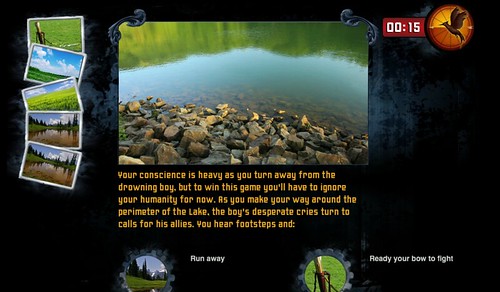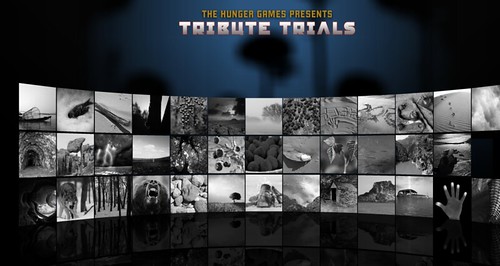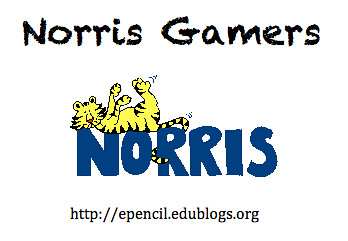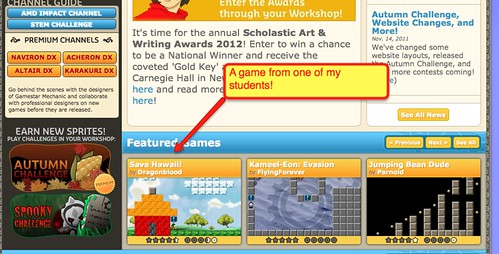Yesterday, I reviewed The Hunger Games and I was exploring the Scholastic book site where writer Suzanne Collins has plenty of interesting videos about the books and her inspiration as a writer. I also noticed a link for some Hunger Game-inspired games, so I figured: I might as well check it out. There are two games on the site, both of which are really just advertising for the book.

The first, Trial by Fire, is a Choose Your Own Adventure game, which is kind of interesting since I was just re-exploring that genre last week as part of our blogging series around Mentor Texts for the Digital Writing Workshop. Here, you choose a name and you are the character in the Hunger Games, making decisions as the clock ticks down on you. The music made my heart beat faster, pointing once again to the power of all the multimedia elements for website design. The quick pace and the connections to the story were well-done, and I bookmarked it as a good example of an adventure story with multiple paths.

The second, Tribute Trials, is a quiz-style game, in which you are asked a series of questions on survival, and you are awarded characteristics — such as strength, courage, charisma — that are then tallied up at the end of the game. If you have enough of what you need (I never quite figured that out), you stay alive. I didn’t. I died.
The two games were nicely constructed, with direct ties to the novels. I imagine some of my students would enjoy them. It made me think a bit about how publishers are marketing to young people now, using game theory to spark an interest in the book. I wonder, too, if the games here would have been as interesting if I had not read the book. Would I care? It seemed like the content of the games were designed to tap into what I already knew about The Hunger Games series, but with the movie coming out soon, I suppose eyeballs will be searching the Web for Hunger Games content.
Also, I was thinking: how could I get my students to create companion games for the stories they are writing? What would that look like? Hmmmm.
Peace (in the games),
Kevin




